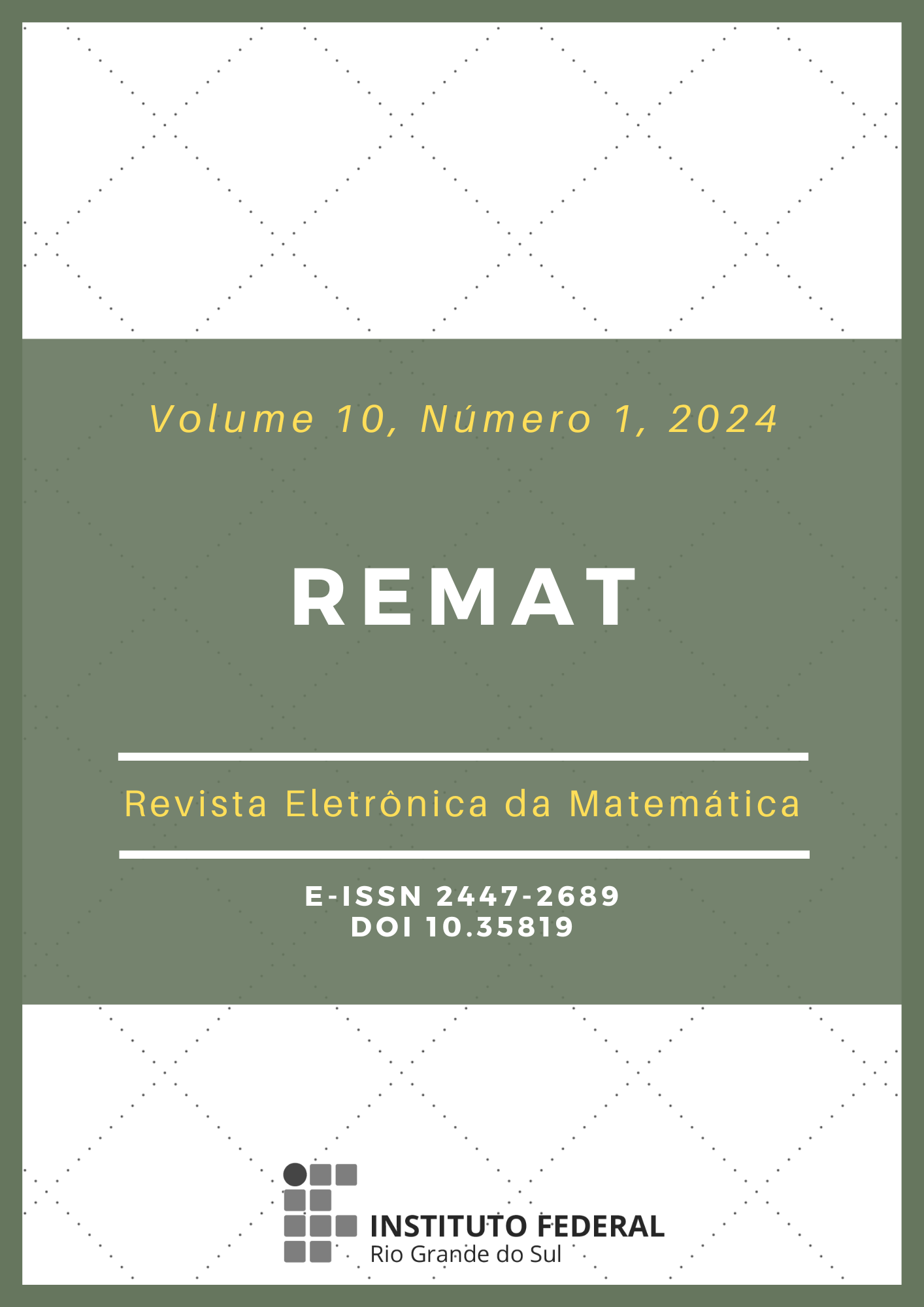About partially ordered sets
DOI:
https://doi.org/10.35819/remat2024v10i1id7008Keywords:
partially ordered set, totally ordered set, finite setAbstract
During classes, it’s common for intriguing questions to arise regarding the presented content. This article was prompted by the following inquiries: Considering a finite set U equipped with a partial order G contained in U x U, what would be the largest (and smallest) number of elements in G? Is there a relationship between this quantity of elements and the nature of the pair (U, G) as a totally ordered set? This article demonstrates that (U, G) is totally ordered if, and only if, (U, G) is partially ordered and G contains n(n + 1)/2 elements, where n represents the cardinality of U.
Downloads
References
O'CONNOR, J. J.; ROBERTON, E. F. A history of set theory. Escócia: School of Mathematics and Statistics, University of St Andrews, 1996. Disponível em: https://mathshistory.st-andrews.ac.uk/HistTopics/Beginnings_of_set_theory. Acesso em: 26 jan. 2024.
HALMOS, P. R. Naive Set Theory. Princeton, New Jersey: D. Van Nostrand Company, 1960.
HRBACEK, K.; JECH, T. Introduction to Set Theory. 3. ed. New York: Marcel Dekker, 1999.
Downloads
Published
Issue
Section
License
Copyright (c) 2024 REMAT: Revista Eletrônica da Matemática

This work is licensed under a Creative Commons Attribution 4.0 International License.
REMAT retains the copyright of published articles, having the right to first publication of the work, mention of first publication in the journal in other published media and distribution of parts or of the work as a whole in order to promote the magazine.
This is an open access journal, which means that all content is available free of charge, at no cost to the user or his institution. Users are permitted to read, download, copy, distribute, print, search or link the full texts of the articles, or use them for any other legal purpose, without requesting prior permission from the magazine or the author. This statement is in accordance with the BOAI definition of open access.













 https://orcid.org/0000-0002-0893-7426
https://orcid.org/0000-0002-0893-7426


















